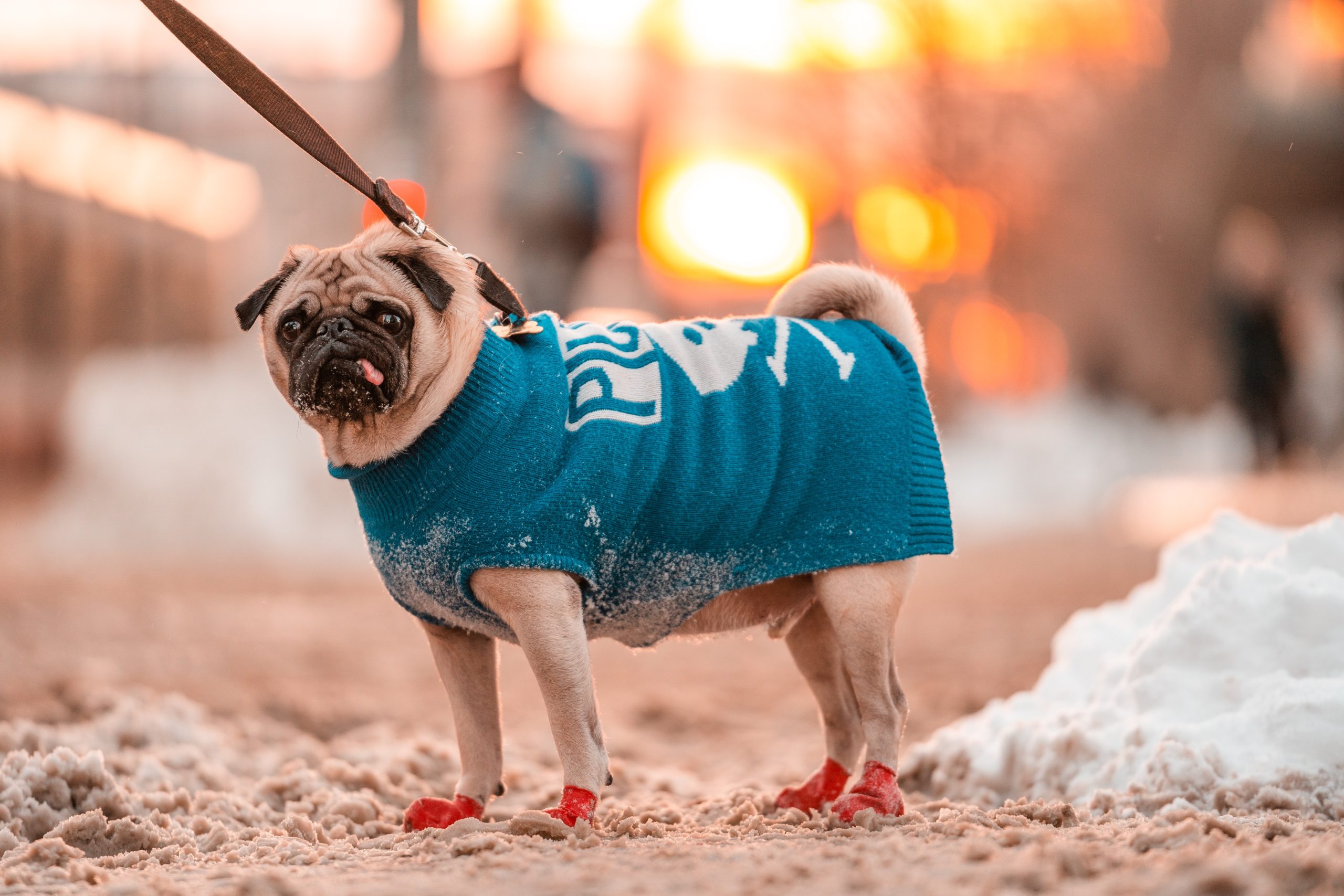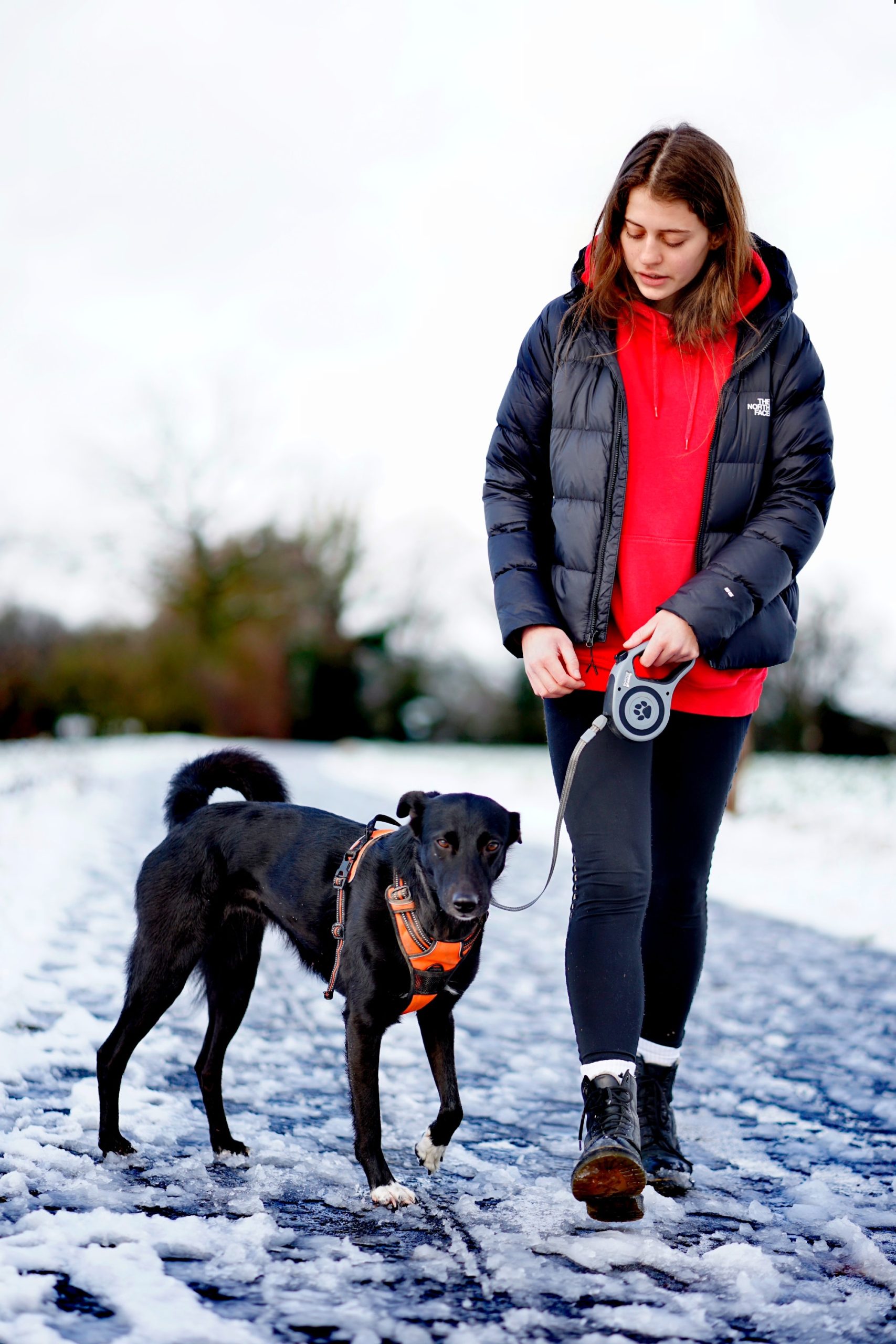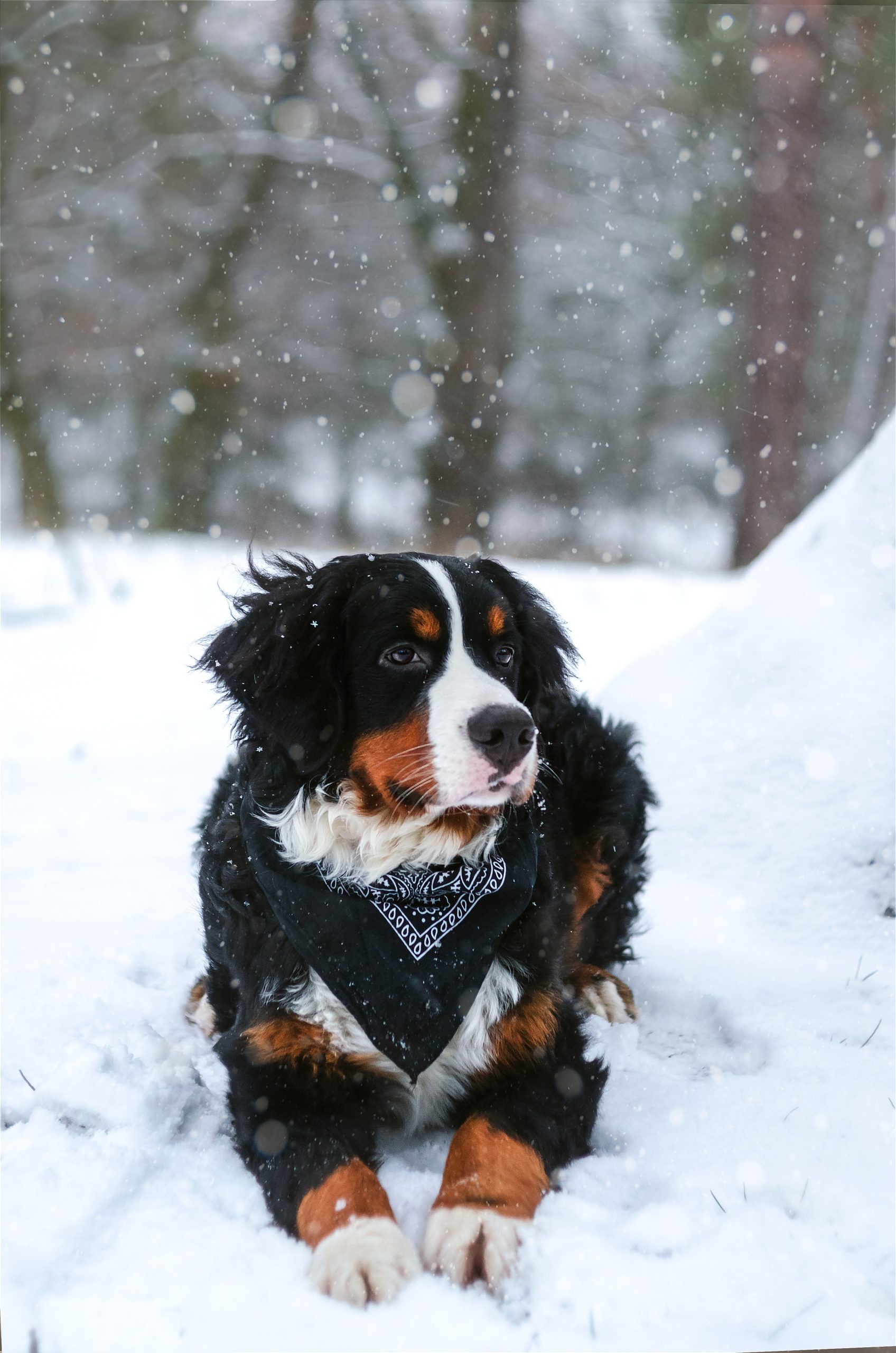Winter Paw Protection: Keeping Your Dogs Feet Safe and Healthy in Cold Weather
Winter Paw Care for Dogs: Tips and Techniques – Learn how to protect your furry friends paws from freezing temperatures, toxic chemicals, and sharp ice during the winter season by using booties, paw balm, and proper grooming techniques.
Understanding Winter Hazards for Dog Paws
Winter presents a unique set of hazards for a dog’s paws that can significantly impact their health and well-being. Freezing temperatures pose a risk for frostbite and hypothermia, which can cause discomfort and long-term damage. The application of ice-melting salt on sidewalks and roads can lead to irritation, dryness, and even chemical burns on the sensitive paw pads. Moreover, sharp ice and hidden objects under the snow can cause cuts, abrasions, and potential infections, affecting a dog’s mobility and overall health.
For instance, consider the scenario of a dog walking on a sidewalk treated with ice-melting salt. The salt can stick to the dog’s paws, causing discomfort and irritation. Over time, this can lead to dryness, cracking, and even chemical burns, affecting the dog’s ability to walk and causing pain. Similarly, if a dog encounters sharp ice or hidden objects under the snow, it can result in injuries, making it essential for dog owners to be mindful of these potential hazards.
Given these risks, it is crucial for dog owners to be proactive in protecting their pets’ paws during the winter season. By understanding these hazards and taking appropriate measures, such as using protective booties and paw balm, dog owners can ensure the well-being of their furry companions and minimize the impact of winter-related hazards on their paws [3].
Techniques for Protecting Dog Paws in Winter
Winter can be tough on a dog’s paws, but there are several effective techniques that can help protect them from the hazards of the season. One crucial method is the use of booties, which provide full coverage, warmth, and durability. For example, breeds that are not naturally adapted to cold weather may benefit greatly from wearing booties to shield their paws from freezing temperatures and other winter dangers. In addition to booties, applying paw balm is essential to minimize dry skin and prevent damage from exposure to ice-melting salt. This protective layer not only moisturizes the paws but also acts as a barrier against harsh winter elements, ensuring the overall health of a dog’s paws.
Furthermore, after outdoor activities, it’s important to wipe down a dog’s paws to remove any ice, snow, or salt residues that may have accumulated during walks. This simple step helps in preventing irritation and discomfort, ultimately contributing to the well-being of the dog’s paws. Additionally, during periods of extreme cold, reducing the duration of walks is advisable to prevent the risk of frostbite. Considering a coat or jacket for added warmth during walks is another beneficial technique, especially for dogs with shorter fur or those sensitive to cold temperatures. These measures play a vital role in protecting a dog’s paws from the harsh effects of winter, ensuring their safety and comfort.
Grooming and Cleaning for Paw Health
In the winter, dog paws are susceptible to various hazards such as freezing temperatures, ice-melting salt, and sharp ice, making regular grooming and cleaning essential for maintaining their health. For instance, snow and ice can accumulate between the paw pads, leading to discomfort and potential injury. By regularly grooming and cleaning a dog’s paws, pet owners can prevent the buildup of snow and ice, reducing the risk of frostbite and other cold-related injuries. Moreover, long-haired dogs require extra attention as ice balls and debris can get trapped in their fur, leading to discomfort and even skin irritation if not addressed promptly.
In addition to grooming, the drying process after walks is crucial for paw health. Drying a dog’s paws thoroughly helps to remove any moisture, ice, or salt residue, which can be irritating and harmful to the paw pads. This simple step can significantly reduce the risk of skin irritation and damage caused by the harsh winter elements. Furthermore, moisturizing a dog’s paws with a high-quality paw balm can provide an additional layer of protection, keeping the paw pads hydrated and preventing dryness and cracking. The application of paw balm is especially important for dogs that are frequently exposed to ice-melting salt, as it helps minimize the potential damage caused by the chemicals.
Overall, by emphasizing regular grooming, thorough cleaning, and proper moisturizing, pet owners can ensure that their dog’s paws are well-prepared to withstand the challenges of the winter season, ultimately promoting their overall paw health and well-being.
Protective Measures and Precautions
To safeguard a dog’s paws during the winter, there are several protective measures and precautions that can be taken. For instance, it’s important to be proactive by prepping the paws before outings, which involves trimming any excessive hair and nails. This not only prevents snow and ice from accumulating between the toes but also reduces the risk of ice balls forming, which can cause discomfort and potential injury to the paws.
In addition, applying a thin layer of protective balm before walks can act as a barrier against the harsh effects of salt and de-icing chemicals. For example, paw balms with natural ingredients like beeswax and coconut oil can help soothe and protect a dog’s paws from the drying and potentially damaging effects of salt exposure. Furthermore, using dog boots can provide an extra layer of defense, safeguarding the paws from contact with salt, de-icers, and sharp ice, thus minimizing the risk of irritation and chemical burns.
Moreover, it’s essential to be mindful of the type of de-icers used on walking routes, as some chemicals can be toxic to dogs. Opting for pet-friendly de-icers and thoroughly washing a dog’s paws after walks can prevent accidental ingestion and irritation, ensuring the overall well-being of the dog. Additionally, recognizing the signs of frostbite and hypothermia is crucial for prompt intervention, and implementing good grooming practices and protective measures is vital for maintaining a dog’s paw health during the winter season.
Importance of Winter Paw Care for Dogs
Winter paw care for dogs is crucial because of the heightened vulnerability of a dog’s paws during the winter season. The cold weather, freezing temperatures, and harsh conditions pose several threats to a dog’s paw health, making it essential for pet owners to be proactive in protecting their furry companions. For example, the freezing temperatures can lead to frostbite, causing damage to the tissues and blood vessels in a dog’s paws, leading to pain and discomfort. Similarly, ice-melting salt used on roads and sidewalks can be abrasive and drying to a dog’s paw pads, resulting in irritation and potential chemical burns. These potential hazards highlight the necessity of taking preventive measures to ensure a dog’s paws are well-cared for during the winter months.
Moreover, the impact of these hazards on dog paw health underscores the significance of winter paw care. For instance, prolonged exposure to ice and snow can lead to cracks and dryness in a dog’s paw pads, making them susceptible to injury and infection. Additionally, toxic chemicals and salt can cause discomfort and pain to a dog, affecting their mobility and overall well-being. Therefore, by understanding the potential risks and being mindful of the challenges posed by the winter environment, pet owners can implement protective measures to safeguard their dog’s paws and prevent any adverse effects on their health and comfort. It is essential to recognize the importance of winter paw care for dogs and take proactive steps to ensure their well-being during the colder months.
Conclusion
In conclusion, winter paw care for dogs is of utmost importance as it directly impacts the overall well-being and comfort of our furry companions. Understanding the potential hazards for dog paws in winter, including freezing temperatures, toxic chemical agents, ice-melting salt, sharp ice, and hidden objects under snow, underscores the significance of protective measures. For instance, the freezing temperatures can lead to frostbite and hypothermia, while ice-melting salt and toxic chemical agents can cause irritation and damage to the paw pads. Therefore, being mindful and proactive in implementing protective techniques is crucial to mitigate these risks and ensure the safety of our canine friends.
By employing protective measures such as using booties, paw balm, and towels, dog owners can provide comprehensive care for their dog’s paws during the winter months. For example, dog booties offer full coverage, warmth, and durability, safeguarding the paws from the cold and potential hazards. Additionally, the application of paw balm helps minimize dry skin and damage from salt, while wiping down the dog’s paws after walks prevents ice buildup and reduces the risk of frostbite. Implementing these techniques not only protects the paws but also contributes to the overall well-being of dogs during the winter season.
In conclusion, proactive winter paw care is a fundamental aspect of responsible pet ownership, ensuring that our canine companions can enjoy the winter season safely and comfortably. By understanding the potential hazards, employing protective techniques, and being proactive, dog owners can effectively maintain their dog’s paw health and well-being in winter, thereby enhancing their quality of life and strengthening the bond between dogs and their owners.




